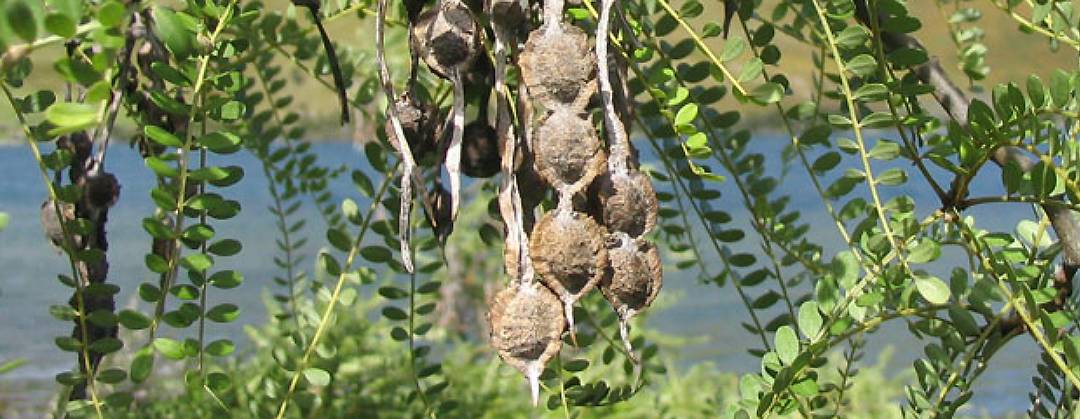Kōhai.
Sophora microphylla Kowhai | Kōwhai

This guide is based on a literature review. It compiles information from various sources. Different sources may offer varying advice and findings.
Slow and irregular germination. Inconsistent reports found with pre-sowing treatments and long-term storage. Can be grown from cuttings.
Hard.
Found widespread in lowland forests and montane forests (forests on the slopes of mountains) throughout New Zealand.(1)
8 days to first germination.(2)
Cold storage at 5°C for 75 days improved total germination.(3) Hard seed shell needs to be cut or sanded.(2), (4) Brown exudate (the gummy liquid released from seeds) needs to be washed out.(1) Soak in boiling water and allow to cool fully.(5) Old seed can be scarified, chipped, or given hot-water treatment (soaking in water at 77–90°C for 48 hours).(6) An earlier study showed that soaking in hot water was lethal.(3)
68–93% of fresh seeds are viable.(2)
Low survival across a variety of sites. Favoured by herbivores.(9)
Kowhai Seed Moth (Stathmopoda aposema).(10)
Germination, seed storage, and vegetative propagation need further investigation.
Information about the native seed profiles
All species names are in the following order: scientific name, common name, and Māori name. Names may vary by region. We have tried to use the most common names across New Zealand.
We have sourced photos from different websites and creators. We have used the images under different licences. These include Public Domain and Creative Commons licenses. For Sophora microphylla, the image details are:
-
Photo by (c) John Barkla – some rights reserved (CC BY)
- Original image
The basis for each seed profile is a literature review carried out by Scion. Te Uru Rākau – New Zealand Forest Service commissioned and worked on the review to produce a native seed catalogue. The full seed catalogue is on the Ministry for Primary Industries (MPI) website.
References
Partridge, T R; Wilson, M D (1990) A germination inhibitor in the seeds of mahoe (Melicytus ramiflorus). New Zealand Journal of Botany 28(4), 475–478.
Norton, D A; Godley, E J; Heenan, P B; Ladley, J J (2002) Germination of Sophora seeds after prolonged storage. New Zealand Journal of Botany 40, 389–396.
Preest, D (1963) A note on the pre-treatment of kowhai (Sophora microphylla Ait.) seed. New Zealand Plants and Gardens 5, 219–220.
New Zealand Plant Conservation Network. Sophora microphylla. Accessed 17 October 2024.
Olsen, M; Millner, J; Ries, T; Douglas, B (2024) Native afforestation: Review of germination. MPI Te Uru Rākau – New Zealand Forest Service Technical Paper No: 2024/03.
Metcalf, L J (1995) The propagation of New Zealand native plants. Godwit; Auckland, New Zealand.
Webb, J A (1993) A study of the seed ecology of two species of Kowhai: Sophora microphylla and Sophora prostrata in Canterbury, New Zealand. Master’s thesis. University of Canterbury, New Zealand.
Butcher S. M; Wood, S M N (1984) Vegetative propagation and development of Sophora microphylla Ait. Combined Proceedings of the International Plant Propagators' Society 34, 407–416.
Siqueira, D; Salvatierra, G; White, D; Dungey, H S (2023) Field testing of forestry and alternative container types for native tree species: Growth performance at two years after planting. Scion, Rotorua, New Zealand (confidential).
Sullivan, J J; Burrows, C J; Dugdale, J S (1995) Insect predation of seeds of native New Zealand woody plants in some central South Island localities. New Zealand Journal of Botany 33, 355–364.